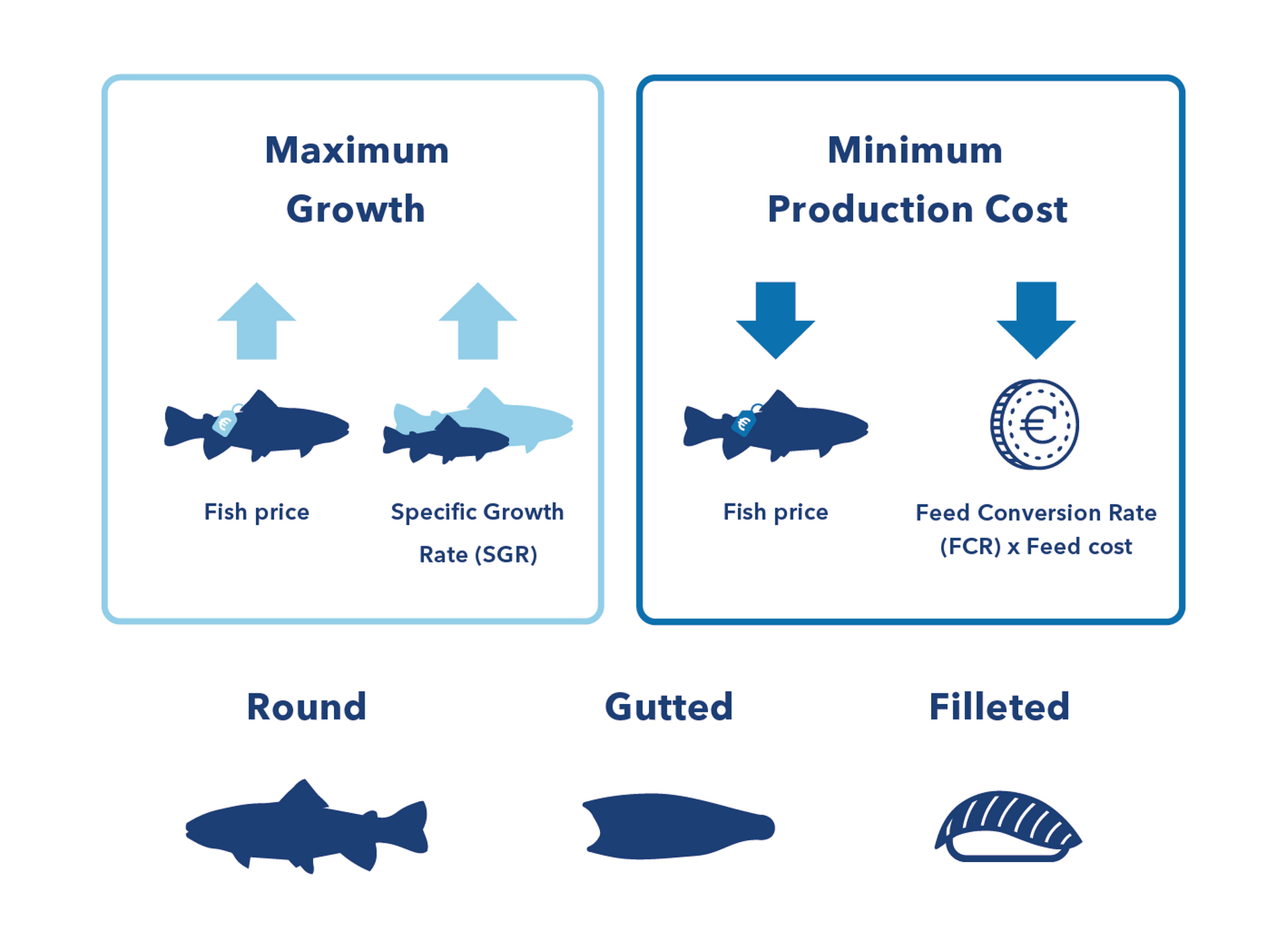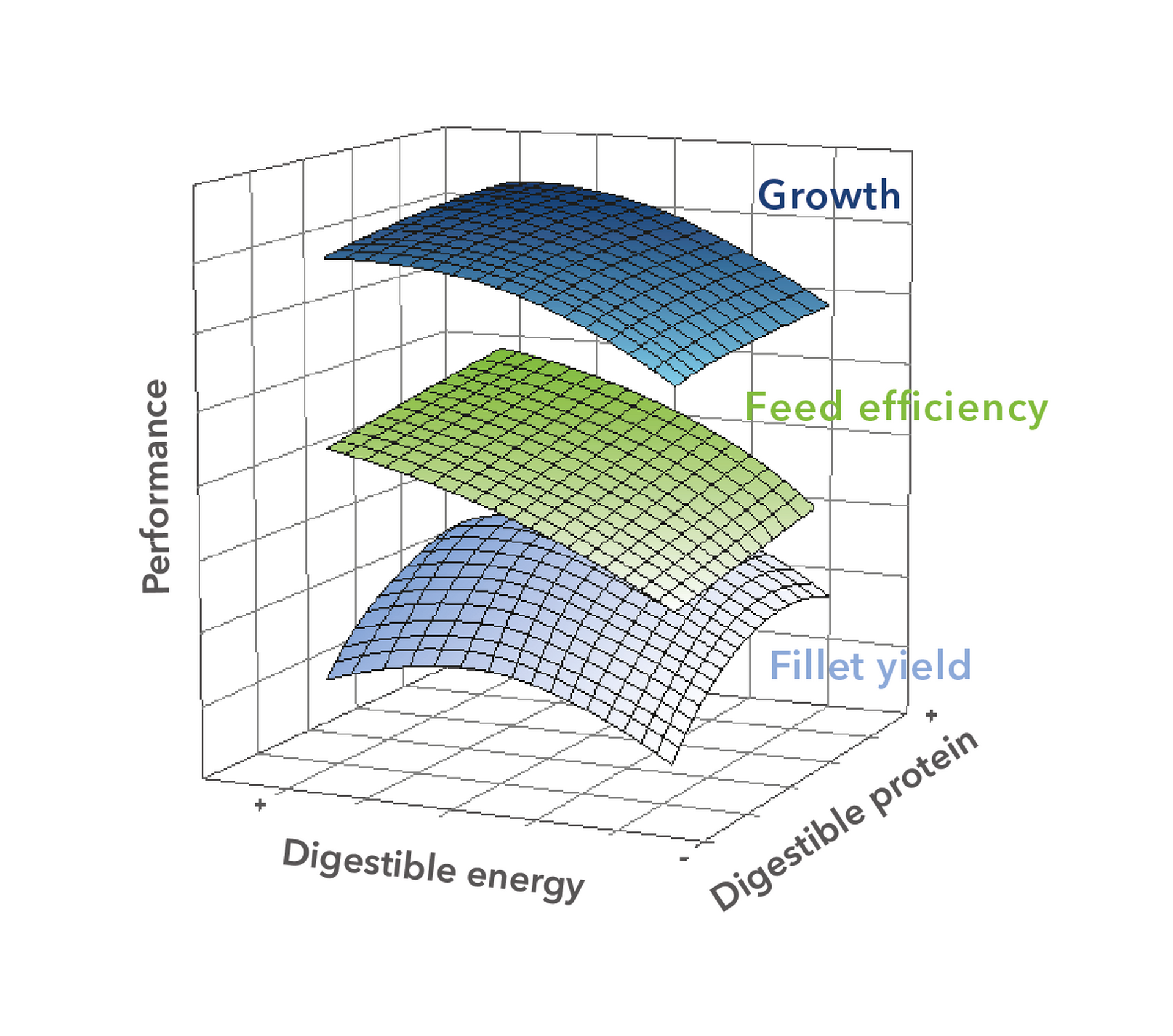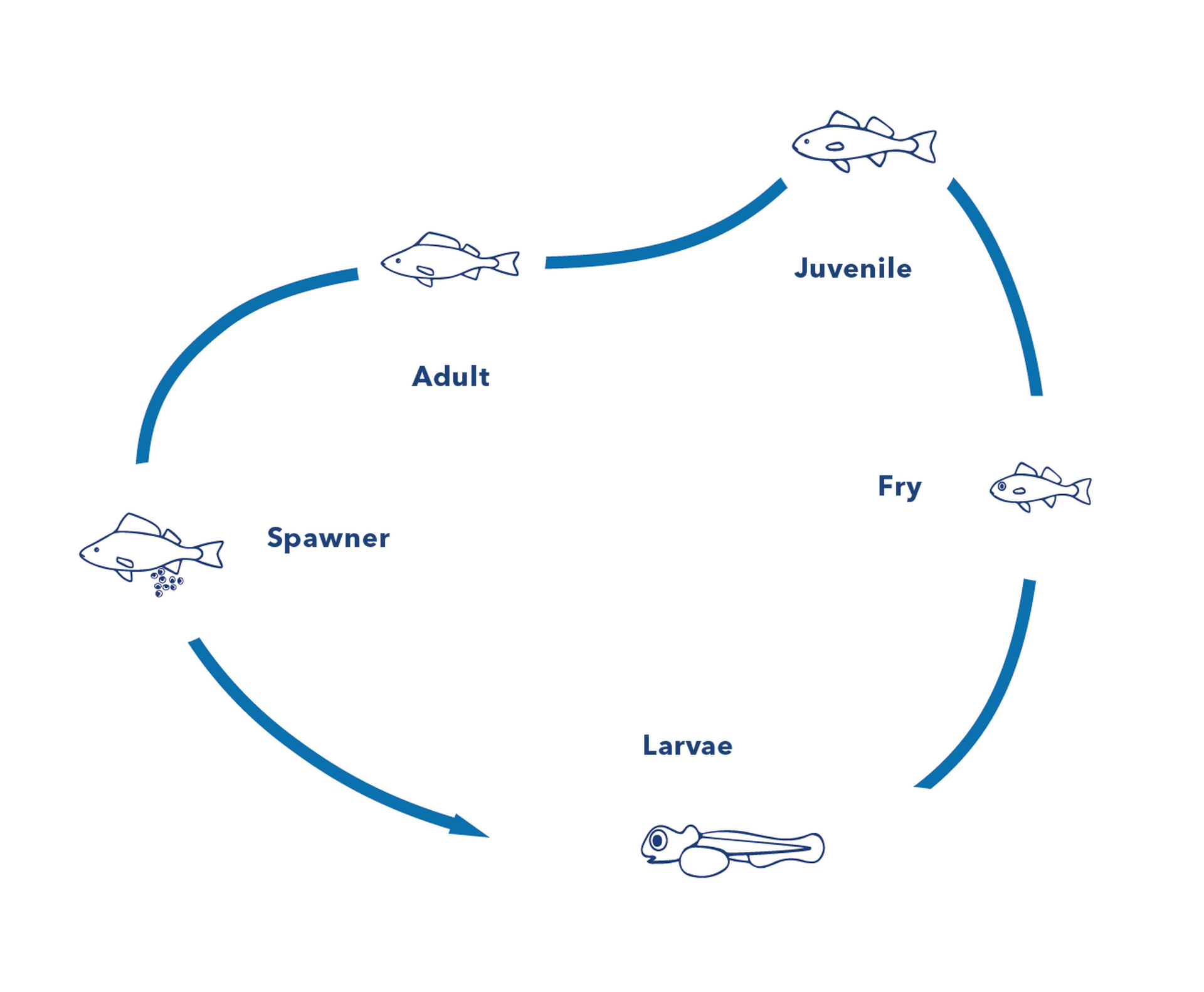The P 3.0 Concept

The P 3.0 Concept ensures that you will always achieve your desired performance. BioMar’s feeds are expertly optimised for different types of fish products and adapted to various market situations, ensuring that you reach your goals.
This content requires cookie consent
Statistical cookies
Marketing cookies
Optimised feed in fluctuating markets
In an ever-changing market landscape, the price of fish can fluctuate significantly, impacting production costs. From round, gutted and filleted, the range is diverse. Enter the P 3.0 Concept: tailored feeds designed to adapt to the dynamic nature of the market. No matter the market situation, we have got you covered.

The science behind the P 3.0 Concept
Identifying the nutritional requirements for different fish species and for each life stage is the first step to formulating the optimal feed.
Achieving the perfect balance between available amino acids and energy is a critical factor in optimising protein utilisation.The nutritional needs of fish evolve throughout their life cycle, with distinct requirements at each stage of growth.
Understanding amino acids & energy

Unlocking life cycle nutrition variations

